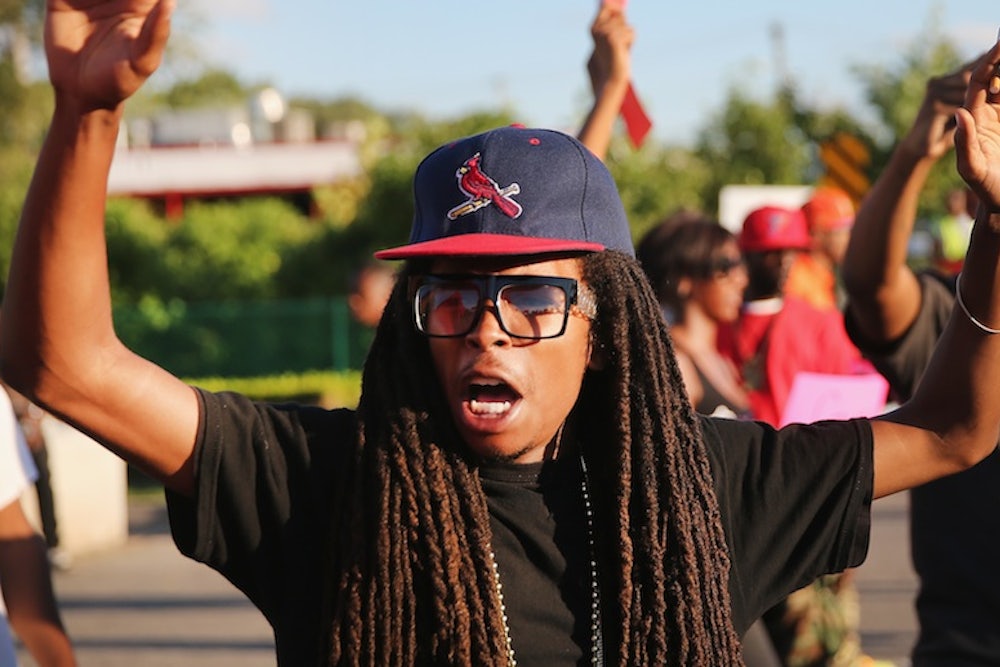For the last 14 years, Missouri officials have been unusually meticulous about keeping track of potential racial profiling in their state. Thanks to a 2000 law passed by the state’s general assembly, one of the first of its kind in the nation, Missouri police officers are required to record the age, gender, and race of every driver they pull over, as well as whether they searched, issued a citation to, or arrested the driver. The Missouri attorney general then compiles the data and issues an annual Vehicle Stops Report for every city in the state. Because of these reports, we know that in 11 of the last 14 years, the likelihood of a black driver being pulled over and searched by the police in Missouri has increased.
These reports are also why we know an awful lot about the racial breakdown of traffic stops in Ferguson—the St. Louis suburb where, on Saturday afternoon, an unarmed African-American teenager named Michael Brown was shot and killed by a police officer. According to last year’s Vehicle Stop Report for Ferguson, African-American drivers there represented 86 percent of all traffic stops despite making up only 67 percent of the city’s population; white drivers, by contrast, accounted for only about 13 percent of the traffic stops in Ferguson despite making up 29 percent of its population. Meanwhile, African-American drivers accounted for nearly 93 percent of the arrests and whites only 7 percent, despite the fact that, when Ferguson police did search drivers, they found contraband on more than a third of their white targets and only a fifth of their black ones. Long before a police officer pulled up his car alongside Brown, who was walking in the middle of the street, and allegedly told him to “get the fuck on the sidewalk”—long before, depending on whose version of events you believe, Brown reached into the car and the officer shot him, or Brown put his hands in the air and was shot by the officer—black residents of Ferguson had ample reason to distrust and resent their police force.
And we had ample evidence to explain and understand their distrust and resentment. The problems of being a racial minority in America are hardly a secret. The statistics—on everything from racial profiling to health disparities to income inequality—are out there and can be found in university libraries or data-journalism websites. The problem is the divide between knowledge and action. As a recent St. Louis Post-Dispatch editorial notes about those attorney general reports, “Every year these numbers come out to little fanfare.” And that’s a big problem—because, until something horrendous like Brown’s death occurs, there are thousands of less-horrendous-but-by-no-means-trivial injustices that go unaddressed.
What’s more, there are many types of injustices that don’t end in gunfire. That’s obviously a good thing—but too often it means these injustices are ignored. As I wrote this week in my story about the end of the civil rights movement, just because African-Americans in the South are no longer being attacked with billy clubs and police dogs doesn’t mean they aren’t being harmed in other, more insidious ways—whether by new voter ID laws or their governor’s refusal to expand Medicaid.
Now that Michael Brown has died, the actions and attitudes of the Ferguson police department are being examined—by the media, by the FBI, and maybe eventually by the Justice Department. But it shouldn’t take a shooting death—or the riots that follow it—to make us pay attention. We're enlightened enough to know a lot of what's wrong, but not motivated enough to ensure that change actually happens.
